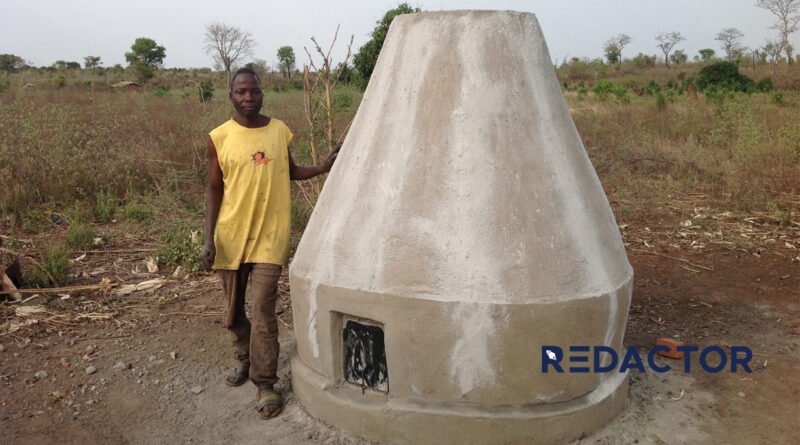Mozambique’s Gorongosa National Park shows that humans and wildlife can coexist
As first appeared in Redactor Magazine in Mozambique, here. Written by Refinaldo Chilengue.
March 28 2023
Understanding specific problems and needs of communities helps design effective mitigation strategies
Elephant-proof silos keep grains safe from hungry elephants.
Image by Refinaldo Chilengue.
Amid a global rise in the extinction of different species and the degradation of natural habitats – associated with the sadly famous human-wildlife conflict – Gorongosa National Park (GNP) in the central Mozambican province of Sofala, researches and adopts different interventions that allow the coexistence between the animals in the park and the residents of the bordering zones.
Judging by what we can see, these initiatives have been successful and it is clear that there is an inversion of the prevailing panorama in many parks, not only in Mozambique: a more or less peaceful cohabitation between humans and wildlife.
Improved hive fences, improved predator-proof corrals and elephant-proof barns are some of the measures that the GNP has adopted, aiming to reduce the conflict between man and wildlife, achieving some coexistence between the two parties.
The land giant – the elephant – presents itself as the main danger to the efforts of subsistence farmers, which is why most strategies have it as the main target.
The hive fences - built with galvanised steel sheets and strategically placed in the usual elephant corridors - are approximately 90% successful in protecting the plantations against the onslaught of the largest terrestrial mammal and the placement of metal plates at the crossing points helps to guarantee a peaceful coexistence, according to Hercília Chipanga, manager of the Community Relations sector of PNG.
The manager also mentions that there are defensive options with double returns: avoiding the interference of wild animals, with the elephant always in evidence and gains in terms of income for the communities. These are the cases of improved hives, which, in addition to scaring away wild animals, generate honey whose harvest brings monetary gains, in addition to contributing to the nutrition of communities.
“Since 2019, PNG has been supporting communities in the South zone, district of Nhamatanda, in the construction of improved granaries called “elephant-proof silos”. This is one of the strategies to prevent and mitigate human wildlife conflict,” says Chipanga.
It was in this context that, according to Hercília Chipanga, the GNP built more than 500 of this type of granary for the same number of households, replacing traditional granaries that did not offer any security for stored food.
Chipanga explained, the “elephant-proof barn” is built using burnt bricks, civil construction rods and cement and this offers resistance and storage conditions that do not allow destruction by elephants and also help to prevent pests.
In this barn with capacity for one ton of grain, the elephant cannot smell the stored product and therefore does not vandalise it, hence the designation “elephant-proof barn”.
This article is reproduced here as part of the African Conservation Journalism Programme, funded in Angola, Botswana, Mozambique, and Zimbabwe by USAID’s VukaNow: Activity. Implemented by the international conservation organisation Space for Giants, it aims to expand the reach of conservation and environmental journalism in Africa, and bring more African voices into the international conservation debate. Written articles from the Mozambican and Angolan cohorts are translated from Portuguese. Broadcast stories remain in the original language.

